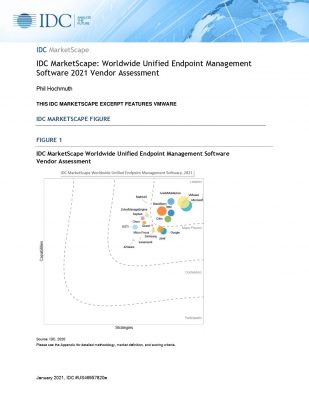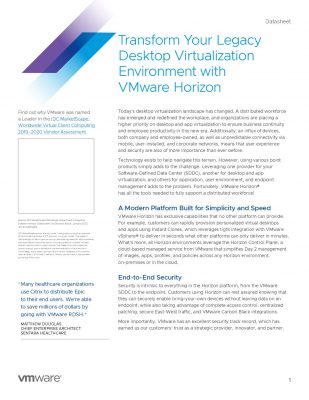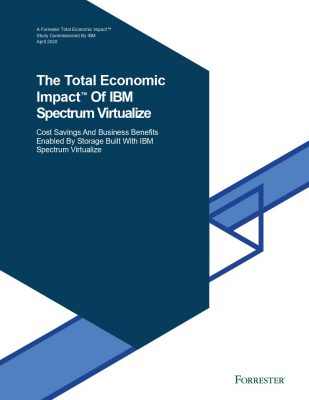Highlights:
- Network virtualization solutions offer a versatile platform that leverages software-defined networking (SDN) to create virtualized networks. Leading examples of software that help network virtualization include VMware NSX, Cisco ACI, and Juniper Contrail.
- By leveraging it, businesses can streamline their network operations, achieve efficient resource utilization, and adapt to the ever-evolving demands of the digital landscape.
Network Virtualization is where the boundaries of the physical world fade away, and digital wonders come to life!
It empowers B2B organizations to unlock a new level of networking prowess. Gone are the days of rigid infrastructures and limited scalability. With this innovative technology, you can eliminate traditional infrastructure constraints and embrace a future of enhanced flexibility and scalability. It is highly beneficial to the world where adaptability and efficiency reign and the complexities of managing hardware fade away. The power of virtualization revolutionizes your connectivity and unlocks a world of untapped potential.
In our last blog, we covered what network virtualization is and the basic aspects of it. Now it is time to dig deeper into the topic.
Applications of Network Virtualization
Network virtualization solutions offer a versatile platform that leverages software-defined networking (SDN) to create virtualized networks. Leading examples of software that help it includes VMware NSX, Cisco ACI, and Juniper Contrail.
These platforms enable businesses to establish virtual networks, separate from the underlying physical infrastructure, optimizing resource allocation and enhancing security. The technology plays a crucial role in modernizing IT infrastructures, enabling dynamic network configurations, and supporting emerging technologies like 5G, IoT, and edge computing.
By embracing this technology, businesses gain enhanced network control, simplified management, and improved adaptability to meet the evolving demands of the digital era.
Network virtualization offers many applications that bring transformative benefits to businesses. Some key applications include:
- Data Center Virtualization: It enables the creation of virtual networks within data centers, decoupling network services from the underlying hardware. This allows for greater flexibility, efficient resource utilization, and simplified management, leading to optimized data center operations.
- Multi-Tenant Environments: In shared or multi-tenant environments, it enables the isolation and segmentation of networks for different users or applications. It ensures secure and independent network services, even when multiple entities share the same physical infrastructure.
- Disaster Recovery and Redundancy: Virtual networks can be easily replicated and deployed across different physical locations, providing efficient disaster recovery and redundancy options. Hence, it ensures business continuity and minimizes downtime in case of unexpected outages.
- Cloud Computing and Hybrid Clouds: Network virtualization in cloud computing is being highly adapted. It facilitates the creation of virtual networks to connect cloud resources and on-premises infrastructure, allowing seamless data exchange and workload migration.
- Network Segmentation and Security: Virtualization enables micro-segmentation, dividing the network into smaller, isolated segments. This enhances security by restricting the lateral movement of threats and containing potential breaches within a confined area.
- Network Testing and Simulation: With this technology, businesses can create virtual testing environments to simulate real-world scenarios without impacting the production network. This facilitates testing, validation, and performance optimization before implementing changes.
- Software-Defined Networking (SDN): SDN and network virtualization complement each other, centralizing network control and management. It simplifies network configurations and policy enforcement, enabling agile network provisioning and dynamic response to changing requirements.
- Mobile Network Virtualization: In the era of 5G and edge computing, network virtualization is crucial in optimizing mobile networks. It enables the efficient allocation of resources and supports network slicing to accommodate diverse services and applications.
- Internet of Things (IoT): IoT deployments benefit from virtualization by creating isolated networks for IoT devices. This enhances security, facilitates device management, and optimizes network resources to accommodate the growing number of connected devices.
- Network Traffic Engineering: Virtualization allows businesses to dynamically allocate network resources based on traffic demands, ensuring efficient bandwidth utilization and improved Quality of Service (QoS).
Types of Network Virtualization
- Internal Virtual LANs (VLANs): VLANs are a fundamental network virtualization service that segments a physical network into multiple virtual networks. Each VLAN functions as an independent entity, enabling efficient resource management, enhancing security, and providing isolation between network segments.
- Virtual Routing and Forwarding (VRF): VRF is a cloud network virtualization technique that creates multiple routing tables within a single router. It allows different virtual networks to coexist on the same physical infrastructure while maintaining privacy and isolation for each network.
- Virtual Private Networks (VPNs): VPNs are a widely-used service that leverages encryption and tunneling protocols to establish secure, private connections over the internet. They enable remote users to access corporate networks securely, ensuring data confidentiality.
- Network Overlays: Network overlays are a popular approach that involves creating virtual networks on top of an existing physical infrastructure. This enables more flexible and scalable network configurations, making deploying and managing complex setups easier.
- Software-Defined Networking (SDN): SDN is a network virtualization service that separates the control plane from the data plane, centralizing network management and configuration. SDN enables programmable, dynamic, and automated network provisioning.
- Network Function Virtualization (NFV): NFV is a cloud network virtualization technique that virtualizes network services, such as firewalls and load balancers, transforming them into software-based instances that can be deployed and managed as virtual machines. NFV enhances the flexibility and cost-effectiveness of network services.
- Micro-segmentation: Micro-segmentation is a service that divides a network into small, isolated segments. This approach enhances security by limiting the lateral movement of threats and containing potential breaches within specific segments.
- Network Slicing: Network slicing is commonly used in 5G networks and provides network virtualization solutions by creating independent virtual networks optimized for specific applications or services. Each network slice operates as an isolated instance with customized resource allocation and service quality.
- Virtual Switching: Virtual switching involves using virtual switches to connect virtual machines (VMs) within a hypervisor. Virtual switches operate at the data link layer, enabling communication between VMs within the same host or across different hosts.
By leveraging this technology in diverse forms, businesses can streamline their network operations, achieve efficient resource utilization, and adapt to the ever-evolving demands of the digital landscape. Embracing network virtualization in cloud computing and its solutions empower organizations to optimize their network infrastructure for enhanced performance, security, and scalability.
SDN Vs. Network Virtualization
SDN (Software-Defined Networking) and network virtualization are interconnected but distinct concepts that complement each other in modernizing network infrastructure. SDN separates the control and data planes, enabling centralized management through a software controller. It boosts network agility, automates tasks, and provides a holistic view for optimization and troubleshooting.
On the other hand, it creates multiple virtual networks on a single physical infrastructure, ensuring better resource utilization and isolation. It simplifies network management, enhances security, and enables isolated environments for various applications or services. SDN and network virtualization empower organizations to build agile, efficient, and secure network infrastructures that cater to modern IT demands.
Final Word
So what is network virtualization? This technology emerges as a transformative force, bridging the gap between technology and business in the digital age. Organizations can optimize resource utilization, enhance security, and achieve greater flexibility and scalability by creating virtual networks that operate independently from the physical infrastructure.
The seamless integration of SDN and network virtualization solutions with the business strategy enables companies to respond swiftly to changing market demands and deliver superior customer experiences. From the above information, we conclude that technology remains at the forefront as technology advances, empowering businesses to embrace innovation, drive operational efficiencies, and unlock new possibilities.
By adopting this solution to their businesses, they can not only stay competitive but also pave the way for a more connected and resilient future, where technology and business synergize to unleash the full potential of their endeavors.























































